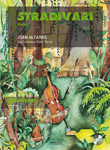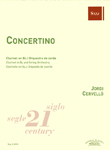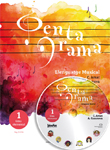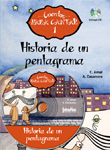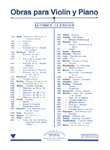WORKS
- Genre
-
Musical education
- Choir
- Counterpoint
- Dictation
- Direction
- Exam study manuals
- General music pedagogy
- Harmony
- Hearing
- Illustrations / Posters
- Improvisation / Sight reading
- Instrument methods
- Instrument pedagogy
- Instrumental study repertoire
- Instrumentation and orquestration
- Musical language
- Solfège
- Templates
- Theory and analysis
-
Incidental music
-
Lined paper
-
Flamenco
-
Religious music
-
Classical / contemporary
-
Modern music
-
Folk music / traditional
-
Musicology
-
Divulgation
-
Games and hobbies
-
Music therapy
-
Children / Youth
-
- Instruments
- Ensemble
- Difficulty level
- Period
- Genre
SOPORTE
Search
Find here: books, scores, composers, digital pieces, cd's
Best-selling works
Our classics

Newsletter
I wish to be informed of the news about your music
We have received your e-mail correctly
Multimedia
Recuerdos de la Alhambra
Guitarra
TÁRREGA, FranciscoTÁRREGA, FranciscoTÁRREGA, FranciscoReg.: UMG18347
8,00 €
P.V.P. (VAT included 4%)
Add to cart
- Ensemble: Solo.
- Genres: Classical / contemporary: Chamber.
- Language: Español / Castellano
- Product format: Partitura
- Difficulty level: Intermediate-advanced
- Period: 1st half S. XX
- Publishing house: UNION MUSICAL EDICIONES S.L.
- No. of pages: 8
- Measure: 30,00 x 23,00 cm
- Available in digital: No
- Available for rent: No
Recuerdos de la Alhambra (Memories of the Alhambra) is a classical guitar piece composed in Málaga by Spanish composer and guitarist Francisco Tárrega. It requires the tremolo technique and is often performed by advanced players.
The piece was written for and dedicated to Tárrega's patron Concepción Gómez de Jacoby in 1899, commemorating their visit to the Alhambra palace and fortress complex in Granada, Spain. It was originally entitled Improvisación! A Granada¡ Cantiga Árabe. It became known through an early 20th-century publication edited by Tárrega and dedicated as an homage to the French guitarist Alfred Cottin.
The piece showcases a challenging guitar tremolo, wherein a single melody note is plucked consecutively by the ring, middle and index fingers in such rapid succession that the result is an illusion of one long sustained note. The thumb plays an arpeggio-pattern accompaniment simultaneously. Many who have heard the piece but not seen it performed mistake it for a duet.
The A-section of the piece is written in A-minor and the B-section is written in the parallel major (A-major).

